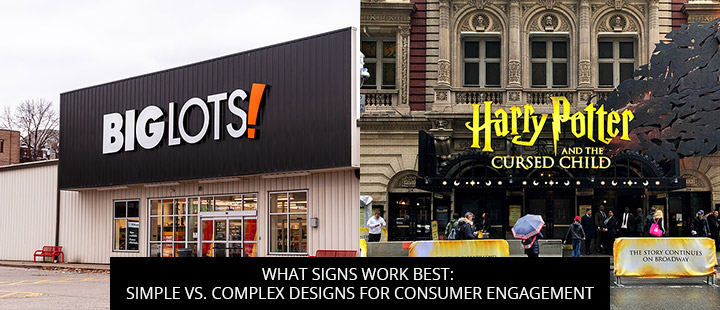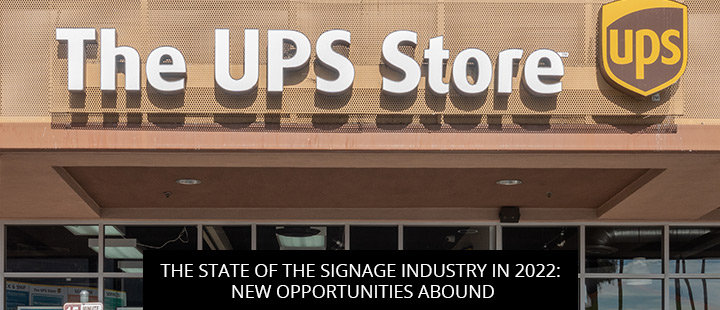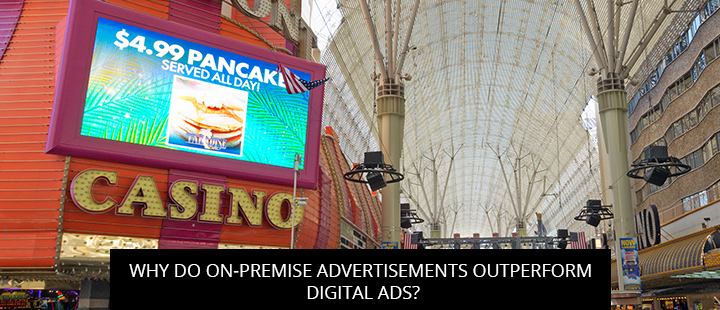The value of signage for driving in-store sales, particularly for unpackaged and minimally packaged goods (e.g. plants, apparel, produce), is well-established in the literature. For instance, in the Interdisciplinary Journal of Signage and Wayfinding, authors Knurth et al. (2020) note that “signs can facilitate the buying decision by providing product information that may not be readily discernible by simply viewing the product” (p. 7).
However, the jury’s still out how much information we ought to provide on those signs so that we motivate purchases without overwhelming the consumer. Some argue the more the merrier, but research has identified points of diminishing returns, with readers frequently tuning out overloaded signage in retail settings. On the other hand, proponents of the less is more approach may be missing opportunities to engage viewers with rich design and valuable information.
So what’s the answer? As is often the case, context is key. In some settings, complex designs work best; in others, simplicity reigns supreme. To help you make the right decisions for your sign design, today’s post reviews key findings on the effects of visual complexity from the Interdisciplinary Journal of Signage and Wayfinding.
[sc_fs_faq html=”true” headline=”h2″ img=”” question=”Do Signs Benefit From Visual Complexity? ” img_alt=”” css_class=”ct-faq”] “While increased feature complexity had mixed results on favorable evaluations, increased design complexity had a more consistent correlation with longer gazes and more favorable attitudes towards the visual display,” write Knuth et al. (2020) in the introduction to their report. [/sc_fs_faq]
Based on these preliminary findings, Knuth et al. (2020) hypothesized that consumers would allocate more visual attention to complex designs, and that sign complexity would be a predictor of increased likeliness to buy.
To test this hypothesis, 5 sign experts rated 105 garden center signs for complexity. Next, they selected 5 low, moderate, and high-complexity designs for the study, and used eye-tracker software to measure consumers’ visual attention in-store.
Here’s what they found:
- Subjects allocated greater visual attention (higher fixation count and longer total fixation duration) to more complex designs
- Complex sign designs were rated more attractive than their simpler counterparts
- Sign fixation and attractiveness were positive predictors of consumers’ likeliness to buy
These findings echoed those already reported in the literature, with previous studies highlighting the sales-boosting effects of complex designs and information-rich messaging for products with minimal packaging (in this case, plants).
But that doesn’t mean complex, information-rich designs are always best.
A Case For Simplicity: When Less Is More For Sign Design
While complex designs may drive sales of low-packaging products in retail settings, complexity isn’t always key. In fact, in some cases, design complexity will work against you.
Knuth et al. (2020) report that, while attractive, information-rich messaging may also “give consumers too much information and higher cognitive load, which makes decision-making more difficult” (p. 7). This problem often arises when information-rich signs are paired with information-rich packaging materials.
So what’s the bottom-line? Sometimes less is more for products with plenty of information listed on their packaging. In these cases, focus on striking-yet-simple sign designs that will draw the consumer in and direct them towards the information-rich packaging, rather than overloading viewers with competing walls of text.
Complex designs also need to be avoided with wayfinding signs and safety signage, both of which rely on quickly informing their readers.
Find Qualified Sign Designers Near You — Contact Signworld
For helping finding local sign shops who understand the value of both simple and complex designs in different contexts, call 888-765-7446 or visit the Signworld business alliance website. We have more than 330 partners across the country, each of whom are expertly trained in the science of sign design. And no matter who you choose, your consultation is 100% free.
References
Knuth, M., Behe, B. K., & Huddleston, P. T. (2020). Simple or complex? Consumer response to display signs. Interdisciplinary Journal of Signage and Wayfinding, 4(2), 7-22.




